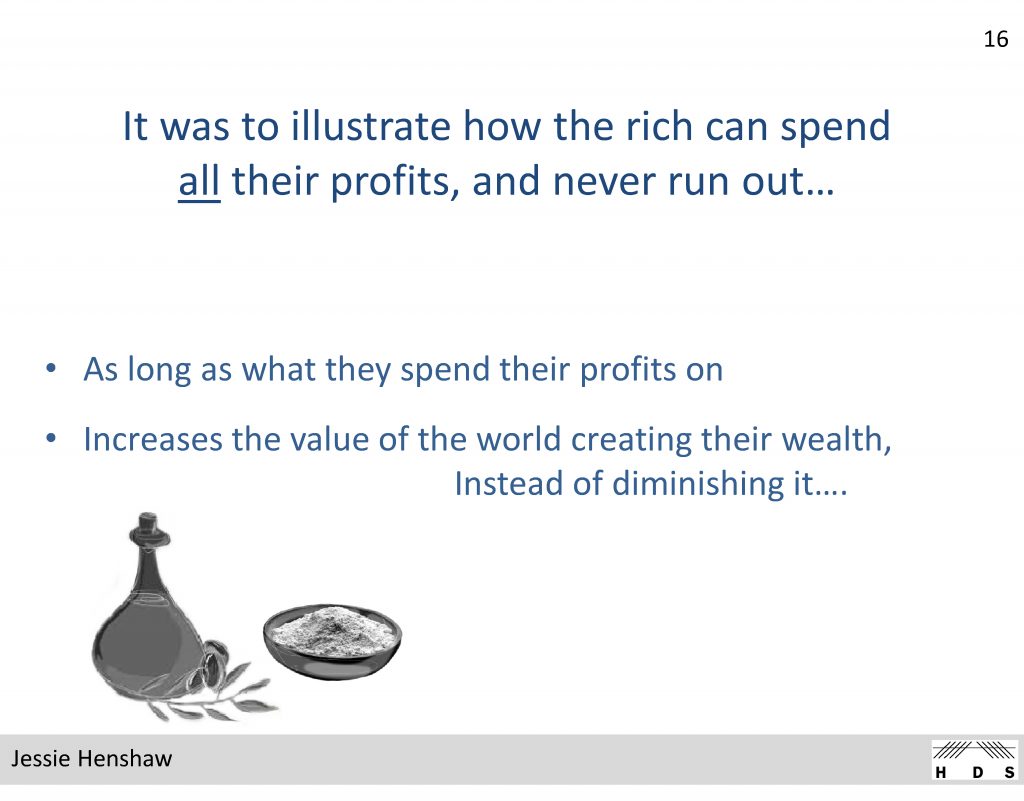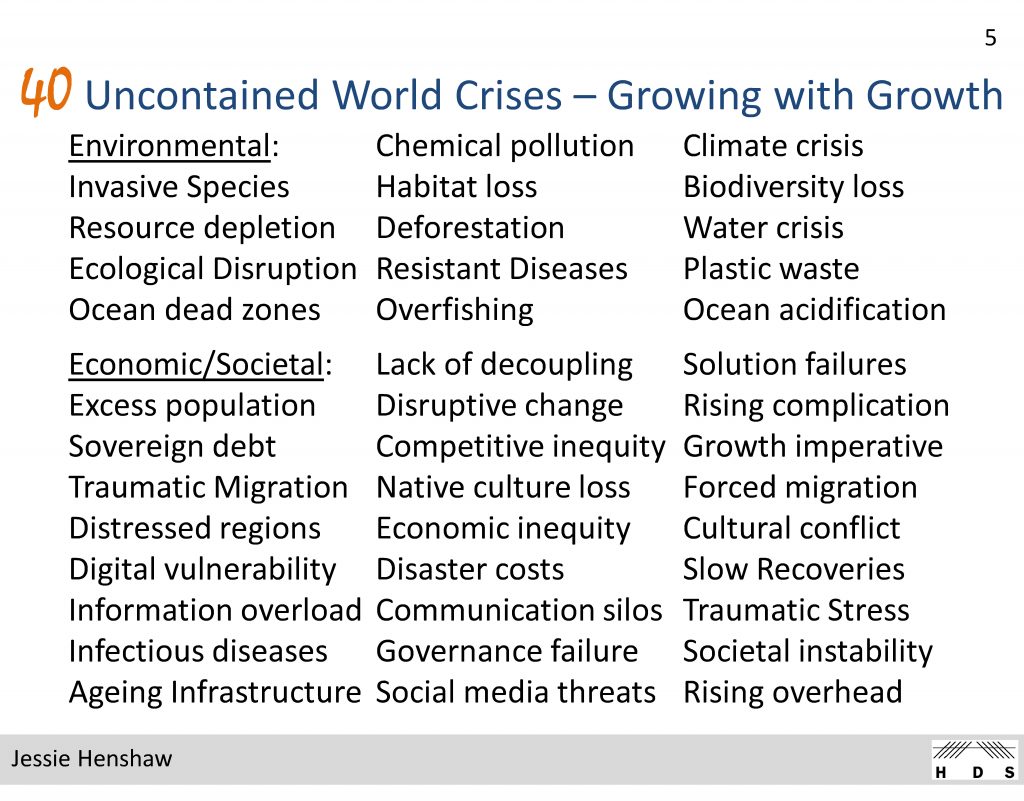“Finance Serving Life” introduces an updated version of the transformation journey for global capitalism envisioned by J.M. Keynes. He first described it with a biblical fable he called “The widows cruse” (or “Widow’s cup”) based on the 1 Kings 17 story of Elijah asking for food from a poor widow with scarcely any, just a last bowl of flour and flask of oil. To relieve the poor widow of doubt Elijah tells her that if she shares her scarce provisions it will provide generously for both of them, becoming inexhaustible as long as she is in need.
Keynes’ use of the fable was meant illustrate to the wealthy that if growth ever became unprofitable, they could sustain a healthy economy by spending rather than compounding their profits, and have their profits forever be return to them. It illustrates a true natural economic principle of sustainability, that at natural limits to growth spending the profits from investments will become necessary to keep them profitable. That principle is also observed in living systems that repurpose their surpluses at their limits to growth, from being used for multiplying their parts to perfecting their uses and designs in order to thrive at maturity.

Today we can observe that using profits to continue to multiply the parts and demands of the economy on the earth and humanity have become excessive, in total effect impoverishing rather than enriching the both the human and natural world. In principle, though also depending on how it is done, relieving nature and humanity of escalating demands for increased productivity by wisely spending, rather than reinvesting profits would assure that the same level of profits would become everlasting.
Philanthropy and sustainability are among many such good purposes that those with a “good eye for value” might choose at a time such as the present when compounding profits to multiply the parts and scale of the world economy has become increasingly unsustainable. In macro-economic terms, spending the profits of the economy as it approaches the natural limits of healthy development relieves the natural world from endlessly increasing extractive depletion and disruption, while repurposing the use of profits for perfecting the economy’s systems and their relationships with the natural world, potentially bringing endless vitality to the whole.

One of the fine points observers often miss is that a non-growing world economy, using its profits for perfecting its designs for thriving and caring for the planet, would not become a stagnant “cash-cow.” Like a natural ecosystem it could be a thriving and stable system for continual self-reinvention, maintaining as much creative change, i.e. “creative destruction,” as is comfortable. Maintaining that balance of healthy creativity, avoiding both rapacious growth and stagnation, is then the steering job of the transformed economic system.
People are such wonderful designers of systems they put their minds to, and life offers so very many wonderful examples of successful transitions of this kind, from compound extractive growth to long lived creative stability, it is hoped that now that we are faced with the challenge, we could put our minds to it and figure it out.
The current slide set for presenting the concept more fully as a talk or webinar has the same name “Finance serving Life.”
jlh
